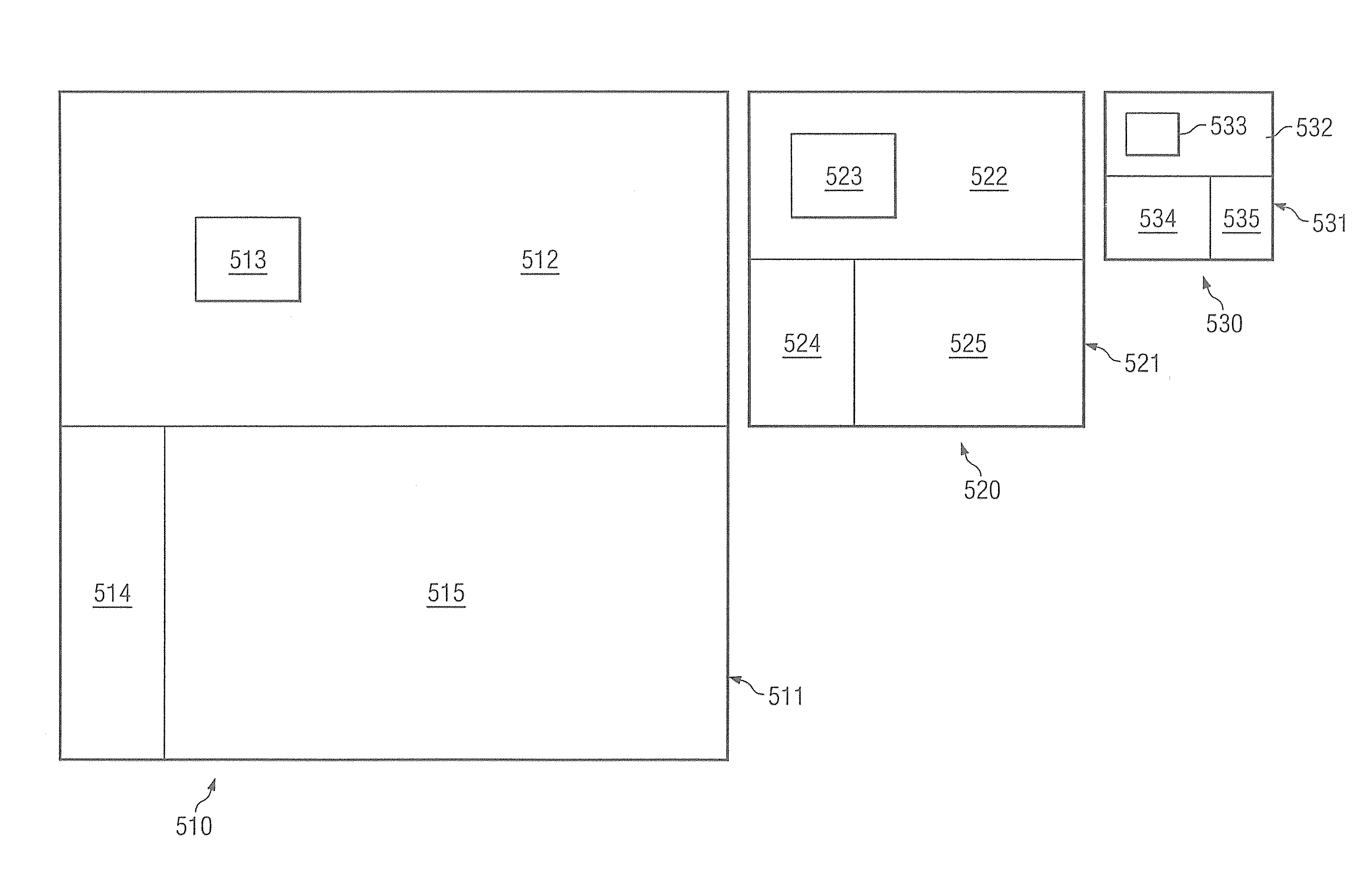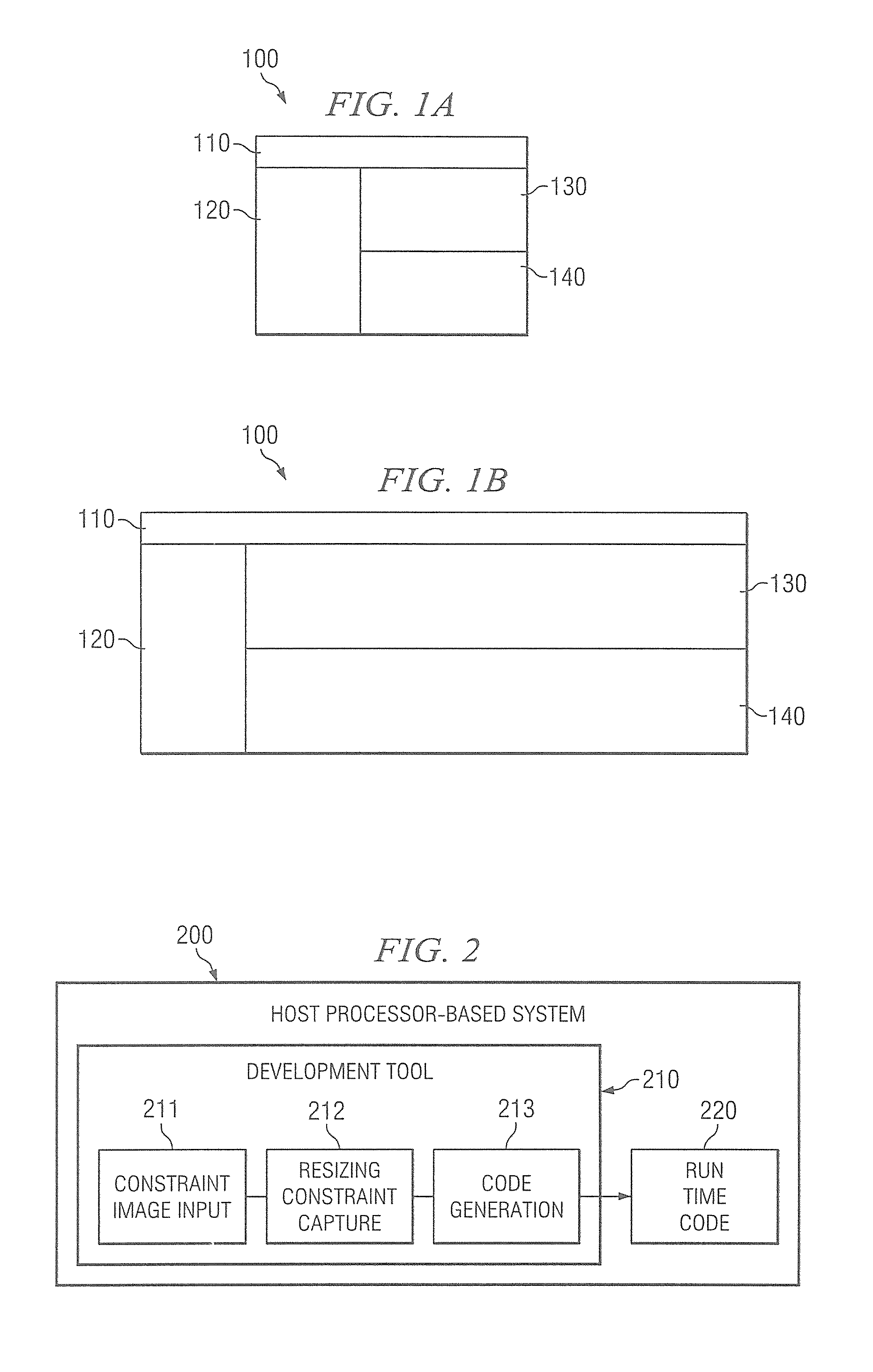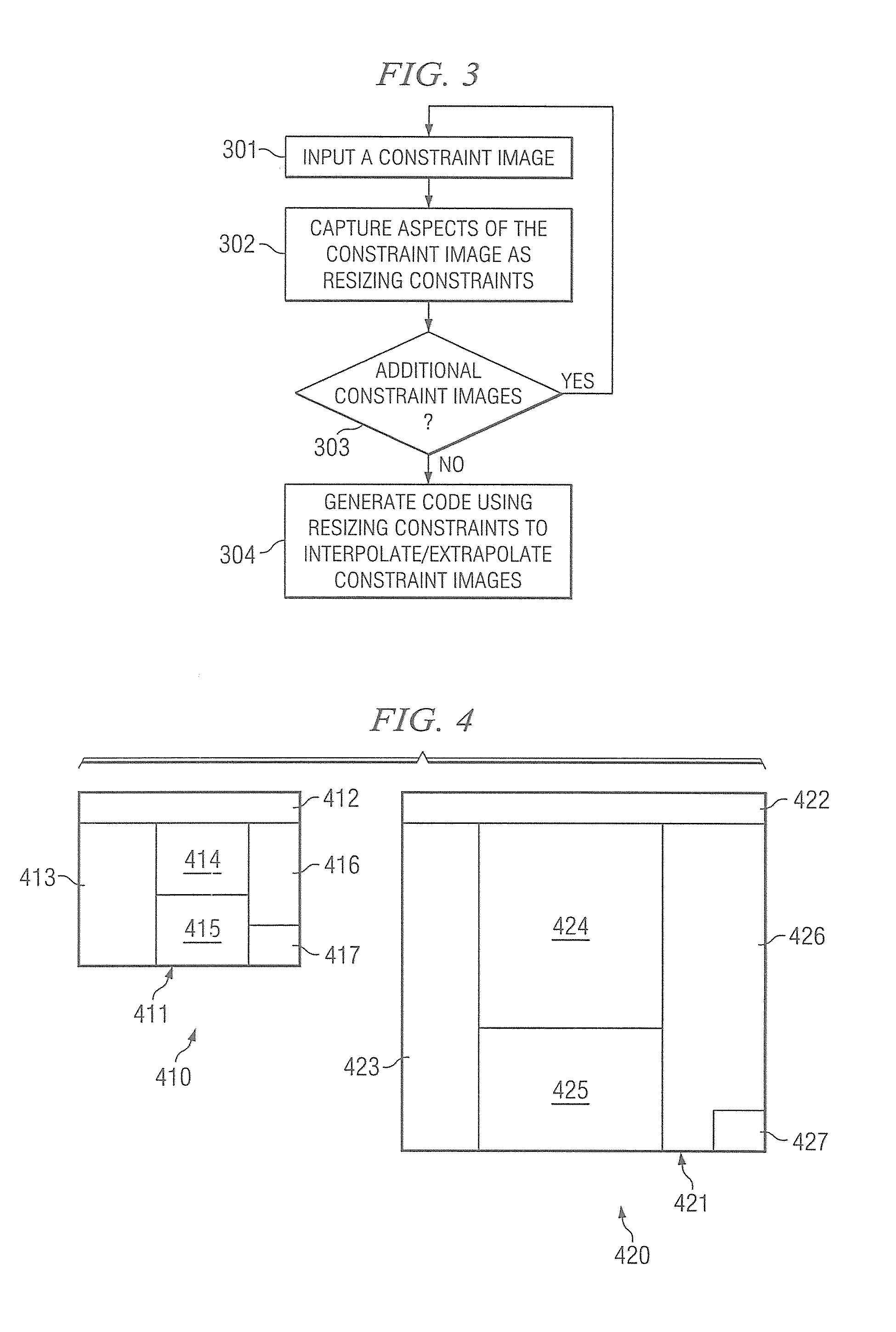Rendition-based graphical layout management
a graphical layout and rendition-based technology, applied in the field of computer program layout, can solve the problems of difficult to develop various program aspects, insufficient display of particular size of window b>100/b> in fig. 1a, and a number of challenges
- Summary
- Abstract
- Description
- Claims
- Application Information
AI Technical Summary
Benefits of technology
Problems solved by technology
Method used
Image
Examples
Embodiment Construction
[0023]Directing attention to FIG. 2, a system adapted to provide rendition-based graphical layout management according to an embodiment of the present teachings is shown. The embodiment illustrated in FIG. 2 includes development tool 210, such as may comprise an instruction set operable upon host processor-based system 200 to define operation as described herein, providing a graphical development environment useful in developing computer programs. Accordingly, when implemented in software, elements of the present teachings are essentially the code segments to perform the described tasks. The program or code segments can be stored in a computer readable medium or transmitted by a computer data signal embodied in a carrier wave, or a signal modulated by a carrier, over a transmission medium. The “computer readable medium” may include any medium that can store information. Examples of the computer readable medium include an electronic circuit, a semiconductor memory device, a ROM, a fl...
PUM
 Login to View More
Login to View More Abstract
Description
Claims
Application Information
 Login to View More
Login to View More - R&D
- Intellectual Property
- Life Sciences
- Materials
- Tech Scout
- Unparalleled Data Quality
- Higher Quality Content
- 60% Fewer Hallucinations
Browse by: Latest US Patents, China's latest patents, Technical Efficacy Thesaurus, Application Domain, Technology Topic, Popular Technical Reports.
© 2025 PatSnap. All rights reserved.Legal|Privacy policy|Modern Slavery Act Transparency Statement|Sitemap|About US| Contact US: help@patsnap.com



